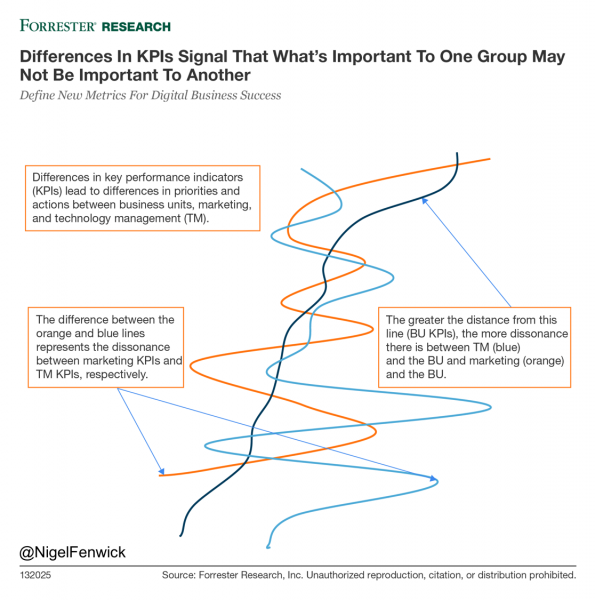The No. 1 Barrier To Effective Digital Transformation
In a recent post, I wrote about how digital experiences shape customer perceptions of value. But it's easy to forget that your organization's culture also shapes your customer's perception of value.

Earlier this week, I was moderating a panel on digital transformation at a Software AG event in New York. In opening the event, Kevin Niblock, Software AG's North America President and COO, described digital business as "a cultural phenomenon." Organizational culture plays an enormous role in the ability of a company's employees to transform a traditional business into a digital business.
If you're not the CEO, you might be forgiven for thinking that you have little control over your corporate culture. But we all have the opportunity to shape our organization's culture. And while nurturing the company culture is arguably one of the most important jobs of the CEO, it is also a critical capability for any leader.
Former IBM Chairman and CEO, Lou Gerstner, reminds us of this in an excellent Wall Street Journal (WSJ) article: "The Culture Ate Our Corporate Reputation". Gerstner writes: "What is critical to understand here is that people do not do what you expect but what you inspect. Culture is not a prime mover. Rather it is a derivative. It forms as a result of signals employees get from the corporate processes that structure their work priorities."
Gerstner's perspectives dovetail nicely with one of the latest reports published as part of Forrester's digital transformation playbook: "Successful Transformation Requires A Customer-Obsessed Culture."
In this report, I highlight how the differences between digital predators and prey shape the cultures that help or hinder digital transformation. And since this research is aimed at helping CIOs, the report explains how the CIO can shape the culture of the technology team and influence the rest of the organization.
In his WSJ article, Gerstner goes on to suggest that "compensation is one of the most important of these processes. If the reward system pays a premium for one kind of behavior, that's what will determine employee behavior, regardless of the words enshrined in the value statement."
Employees Interpret What's Important To The Organization By How They Are Measured.
Leaders frequently apply trickle down metrics to their teams, without giving much thought to the messages these metrics send and the cultural norms they suggest. Even worse, many metrics used to measure employees are entirely inward looking, i.e., they convey little or nothing about the customer or how the customer perceives the relationship with the organization.
Many organizations, including Wells Fargo, use direct sales targets as a means to measure employee effectiveness. In principle this makes sense, since we can only grow sales if we consistently deliver value to customers. But what happens when employees can influence metrics without delivering value to the customer? That's when things tend to go wrong. If we're sending the message that it's the metric that matters more than the customer outcome, we're not creating a customer-obsessed culture; we're creating a metric-obsessed culture.
The debacle at Wells Fargo is just the most recent in a long string of examples. You may even see the impact of this kind of thinking in your own organization. Many CIOs see this when measuring on-time, on-budget performance; employees pad the time required and stuff slush money into budgets to protect their metrics, not thinking about the business impact. What may seem like innocent metrics, become interpreted to suggest this is what matters most to the organization. And these perceptions are reinforced by how leaders recognize employees who hit their targets and how they deal with employees who miss their targets. When employees learn that they will lose their job if they don't hit their sales numbers, they hear very clearly what matters most to leaders — sales not customers.
So what's the alternative?
First, make sure you're using metrics that reflect your customer's perspective on the business and the value your business brings to your customer. Increasing sales may sound like it's aligned to the customer, but that is only true in the long run for the lifetime of each individual customer. Aggregate sales numbers can mask enormous dissatisfaction in the customer base. In the short term, almost any customer might be persuaded to purchase; the question is, are they happy enough to purchase again? Measuring the lifetime value of a customer, customer loyalty, or customer experience, communicate to employees that what matters most is how your customers feel about their relationship with your brand. For technology employees, this means shifting more of their metrics from a focus on project quality toward more of these customer outcome-oriented metrics. After all, the reason they are employed is ultimately to use technology to create value for end customers and/or productivity for employees.
But CIOs can't do this alone. You'll need to work with the CMO, COO, CFO, CPO, and CEO to agree a uniform set of metrics that clearly communicate the values and culture of the enterprise, and which can be applied across the enterprise, not just in tech management.
To learn more about creating a customer-obsessed culture for digital transformation, read the report or schedule an onsite leadership transformation workshop.
See also "Define New Metrics For Digital Business Success".
Previous post: How To Unlock Tech Industry Digital Transformation
Next post: Predictions 2017: CEO's Invest Billions To Transform Operations With Digital Tech